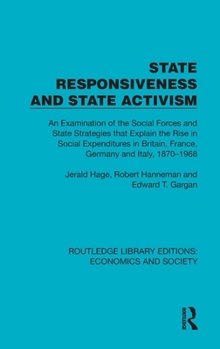State Responsiveness and State Activism: An Examination of the Social Forces and State Strategies that Explain the Rise in Social Expenditures in Brit
State Responsiveness and State Activism (1989) compares social changes and the role of the state. It evaluates which models - economic, modernization, political mobilization, class conflict - best predict the growth in social welfare and in educational expenditures.
Format:Hardcover
Language:English
ISBN:1041131283
ISBN13:9781041131281
Release Date:November 2025
Publisher:Routledge
Length:334 Pages
Weight:1.43 lbs.
Dimensions:0.8" x 6.1" x 9.2"
Customer Reviews
0 rating





